A man is walking slowly, shrugging his shoulders from the cold, talking to himself. The camera frame, with the lake in the background, is up to his knees in size, and he is trying to keep it at a distance, perhaps holding it with his hands. The operator must be following the camera on foot, swaying slightly as he goes. Or perhaps it is a cloudy daytime, but the light is bright, if not clear, on the same lakeside background. At the end of the night and day screens, the man says the same line: "The world has lost its freedom because of technology. The two moving shots of Jean-Marie Straub's last short film, France Against the Robots (La France contre les Robots, 2008), with the miraculous moment when a swan running alongside the surface of the lake appears in the background of the man in the daytime screen, is very moving. They reminds us an another amazing shot in Othon (1970), a film shot by the young Jean Marie Straub and Daniel Huillet half a century ago, the young cinematographer Renato Berta was asked to shoot the film. It is the shot where he follows the rapid-fire conversation between the villainous Straub and Jean-Claude Biette from behind. This shot, which was later quoted in Berta's 70th birthday short film To Renato (2015), however, is rather distinguished by the shoulder height of the frame of the 16mm camera that captures both Straub and Biette. An another great shot comes to mind. In the beginning of Kenji Mizoguchi's Saikaku Ichidai Onna /The Life of Oharu (1952), we see the old prostitute Oharu, played by Kinuyo Tanaka, being chased from behind on the left. The camera, however, follows her with a stability and subtlety befitting studio filming in its golden age as Straub once told his friend Peter Nestler that «Mizoguchi's camera moves the world.", and does not waver as it accompanies Oharu as she walks, trying not to let the man who calls out to her notice her aging. The camera then follows the monk to the temple, where he is warmed by the sound of drums and sutra reading. This is the introduction to a series of scenes, but just as this moving shot allows the viewer to find the temple and the Buddha "together" with Oharu, as same as the shot of finding the swan in France Against the Robots. For this purpose, only the craftwork of the filmmaker and operator could have kept this distance between the characters.
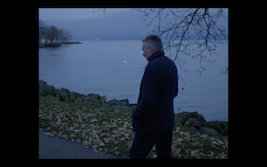
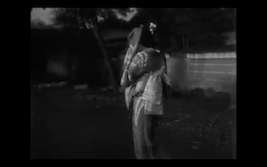
Ⅱ. Bertolucci-like movement
It is true that even Bernardo Bertolucci in The Last Emperor (1987), whose homage to the temple scene of Oharu can be seen in the scene of the fall of the Empress Dowager, may have lost the sense of movement that he had once controlled by using various devices such as the Steadicam. The reason why The Sheltering Sky (1990), in which two characters travel like Roberto Rossellini's Viaggio in Italia (1954), did not functioned not because Bertolucci forgot the word of Gianni Amico in Prima della Revoluzione (1964) in which he shout, "Don't forget Rossellini!." Because Bertolucci was not a director who made time his subject, like Rossellini.It may be that Vittorio Storaro's camera should have moved around on the rails that were constantly laid like the interior scenes of Luna (1979) which make us forget time. Rather, in the scene of Debra Winger crossing the desert and interacting with the nomads, Bertolucci may have been reminded of the innocence of the young people in Pier Paolo Pasolini's Arabian Nights (1974), who finally take off their costumes and show their nakedness to each other, but the images and sounds in The Sheltering Sky were too Hollywood-heavy for Bertolucci to remake the simplicity that he always said about Pasolini.
By the way, the scene in Bertolucci's Strategia del ragno (1970), in which the main character played by Giulio Brogi is walking around the statue of his father, Athos Magnani, and his father's mistress played by Alida Valli appears with a parasol, was oddly similar to a scene of a film which was written by Bertolucci. That is the shot in the duel scene in Sergio Leone's C’era una volta il West (1968), with Henry Fonda walking in a circle around Charles Bronson (the music in C’era una volta il West is, of course, by the recently deceased Ennio Morricone). In the second half of that shot of Strategia del ragno, the music is playing, and suddenly Brogi is going in the opposite direction, but the next shot turns in the original direction, and in the midst of the discomfort, we see a woman with a parasol, and we feel as if we are having a daydream. Recently I noticed the same technique in the scene where Anouk Aimee and Laura Morante meet in Bertolucci's La tragedia di un uomo ridicolo. This is not a dream-like scene, but a scene that foreshadows the two women “working together” to take Ugo Tognazzi's fortune.And in the latter half of Strategia del ragno, there is a scene in which the main character, surrounded by villagers, runs away through the forest, and this scene follows the technique of Akira Kurosawa's Rashomon (1950), in which Toshiro Mifune, running in the sunlight through the trees, actually runs around the camera and is shot with a pan. I wonder if this is also an attempt to create an archaeology of unstoppable rotational movement that goes back from Leone to Kurosawa. However, I feel that the difficult editing that connects the "unstoppable" moving shots with the moving shots probably comes from Luis Buñuel's films. In Nassarin (1958), when the camera approaches a woman who suddenly blinks violently, there is a fantastic scene in which she bites off a man's tongue in the shaking aluminum background, followed by a scene in which she lies down and bends her back like a wrestling bridge. And the jump-cut editing of the scene in which Fernando Rey, the ambassador of a South American country, greets and expels a female terrorist in Le Charme discret de la bourgeoisie (1972). This sense of erasing the time between father and son is familiar not only from Borges' original work but also from Argentine novels and films (see Circe (1994), directed by Manuel Antin and written by Julio Cortázar, and Corpus Perdus (1989), written and directed by Eduardo de Gregorio who participated in the screenplay for Strategia del ragno). Even in Last Tango in Paris (1972), in the hotel room scene where Marlon Brando talks with Maria Micchi, the mother of his wife who committed suicide, Bertolucci did not allow the audience to grasp the position of the two when he connected the backward movement from the close-up of the two or captured them in a horizontal movement across the wall. However, after The Last Emperor, such a sense of his was lost.
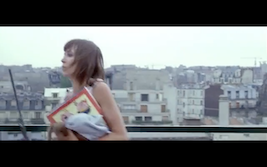
Ⅲ. French Nouvelle Vague
Bertolucci probably paid homage to Dreyer in the episode "Agonia" in the omnibus Love and Anger (1967), which he shot with the Living Theater in a room, with colour and a pure white background. Bertolucci moved a 35mm Mitchell camera on a tripod with the wall, in contrast to Carmelo Bene, who had moved from theater and used a handheld camera extensively at that time. Bertolucci was probably the last person who could captivate an audience with the movement of a camera following a character and leaving away from that character, like Bunuel, Dreyer and Hitchcock. On the other hand, the French Nouvelle Vague filmmakers that Bertolucci had wanted to be a part of, contrary to Bertolucci, rarely shot away from the person in their heyday in the 1960s. In Jean-Luc Godard's Pierro le Fou(1960), Anna Karina smashes a bottle given to her by Jean-Paul Belmondo into a man's brain and runs across the balcony carrying a gun basking the setting sun. The flash-forwards of Karina's interjections, Antoine Duhamel's lyrical melody, and the sense of speed achieved by the dialogue between the two separated from the screen, made this a remarkable scene, but it was also a screen that never left its subject, but pursued it at full speed, never losing sight of it. The camera follows Remy Caution, played by Eddie Constantine in Alphaville (1965), into the adjacent elevator, following the movement of Orson Welles' Touch of evil (1958), and the scene in the room where Remy is first greeted and a gunfight ensues, Raoul Coutard's camera follows one person to another, like passing the baton, leaving no space.
If we compare the filming of Alphaville with the unselective, rather encircling camerawork of Jacques Rivette's films such as La Religieuse (1966), Duelle (1976), Noroit (1976), and Jeanne la Pucelle(1994), we can see that the two In other words, Godard's camera work is the similar to that of Roberto Rossellini. In other words, by leaving one of the two people on the screen and placing the other out of the frame or letting him walk around, Godard tries to capture the microscopic changes of the person in the frame, as in the scene of Ingrid Bergman's fascination with the scene outside the car in Viaggio in Italia. Rivette, on the other hand, captures two people and a place on the screen at the same time, often moving around them, which rather reminds me of Otto Preminger after The man with Golden Arm (1950). On the other hand, by creating a scene as if it were the actual time of an act, it is possible to capture the "waiting time" from a certain posture to a certain movement in a longer span. This can be seen, for example, in the scene where Leni (Juliet Berto) waits for Lucie (Hermine Karagheuz) but is erased by Lucie's blood and jewel at the end of Duelle, or in the scene where Locke (Luca Belvaux), still lying in bed at the end of Hurlevent (1985), a branch of a tree swaying in the wind on the window sill and looks at the illusion of dead Catherine (Fabienne Babe). The beauty of the scenes comes not from the movement itself but from the continuity of the whole scene, like the scene of a couple walking through ruins in Rossellini's Viaggio in Italia (1954). In other words, the tracking shot is a means of following a subject and discovering its changes. However, after Made in the USA (1966), approaching to in Michelangelo Antonioni's Deserto Rosso (1964), Godard moved in the direction of creating a painting by moving the camera itself, and after the last shot of Tout va bien (1972), in finally Nouvelle Vague (1990), Godard used a full range of moving shots, he turned the horizontal moving shots into a paintbrush on canvas. From Weekend (1967) which is somewhere between Jacques Tati and Buñuel, to One Plus One (1968), and to British Sounds (1969) and Pravda (1970) by the Dziga Vertov group, there automobiles frequently appear in the film. As the subject of traffic jams, piles of abandoned cars, factories, and lateral movement photography, the automobile is treated more as an object than as a running object in itself. The flood of noisy sounds from outside the frame, such as horns, readings, and work sounds, deprives the movement of its original function and invites the viewer to Godard's endless dismantling of sound and image.
In addition, apart from Eric Rohmer (who rarely uses movement shots and when he does, he does not make them conspicuous), there are other examples in Nouvelle Vague directors works, such as the cutback epilogue of the movement shot of Jean Pierre Léaud searching for his daughter in François Truffaut's Les Deux anglaises et le continent (1971) and Maurice Ronet's room-to room search for Anthony Perkins in Claude Chabrol's Le Scandale (1967), as well as Truffaut's suicide by falling in Tirez sur le pianiste(1960), and Chabrol's car travel scenes in Les Biches (1968) and Le Boucher (1970), are clearly subjective shots of people. But Chabrol was a little more Antonioni-esque in his zoom and dolly in the final cut of La femme infidèle (1968), or in the mirror ball screen in Les Bonnes Femmes (1960) or the fade-out in Juste avant la nuit (1971) though not a moving shot. There he often presents the audience with the intentionally ambiguous function of the shot. Whether Jacques Demy's films did not sing, as in Lola (1961) and La Baie des Anges (1962), or sang, as in Les Parapluies de Cherbourg (1964) and Les Demoiselles de Rochefort(1967), the camera never stopped following the circuit of people to people. Jacques Rozier's Adieu Philippine (1962) used multiple cameras because it was necessary to keep capturing the spontaneous movements of the performers in the frame. However, in order to do so, the camera must not be pulled back to a safe distance, but rather it must be kept at a distance that risks missing the subject, and the distance itself must be conveyed to the audience, which is what Nouvelle Vague filmmakers, including Jean Rouch, who pioneered the use of handheld 16mm cameras, consistently did,too.
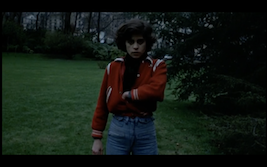
IV. Is Tracking Shot dead?
In the tracking shots of La Signora di tutti (1934) by Max Ophuls, a master filmmaker who kept shooting at a distance where there was a risk of missing the subject, as the Nouvelle Vague people referred to him, the screen shot of Gaby (Isa Miranda) running left and right in a half-crazed frenzy, unable to bear the fact that she had driven her lover's mother to suicide. It is a masterpiece of cinematography, and a precursor of what cinematographer Ubaldo Arata later shot in Rossellini's Roma Citta Aperta (1945) when Anna Magnani is shot dead while chasing a car carrying her lover who was taken by the Nazis. This is a miraculous film and a documentary, considering that it was a film of direct recording during the pre-war period in Italy, which would later switch to a dubbed-sound recording system after World War II. The narrative structure of La Signora di tutti, in which a dying protagonist recalls her life (from this point of view, Raul Ruiz's Klimt (2006) is naturally an homage to this film and to Ophuls, who was born in Vienna, as well as to Schnitzler), is based on the idea that the dead man is the catalyst, and that the reporter's recollections of the interview with another man reconfigure the image. This film was a precursor to Orson Welles' Citizen Kane (1941) . We cannot easily compare the era of one shot-one-sequence moving such as Hitchcock made Rope (1948) and La Signora senza camelie (1953) which even Antonioni made under the influence of the deep focus of Welles and Jean Renoir's Le Regle du jeu(1939), with the current era of Artificial Intelligence and drones. The days of one scene, one-cut that is itself a documentary that attempted to transcend the various limitations of sensitivity, length, cost, and the size and weight of the camera in the film era are over. It is a complete mistake to cite the same technique as a mere statement of procedure in an era when it has become a mere statement of procedure in the digital age from Russian Ark(2002) and Birdman or the Unexpected virtue of Ignorance (2005) to Don't Stop the Camera (2017) and 1917 (2019). At the same time, in an age when the improvisation of the Nouvelle Vague, in which "the natural gestures elicited from the performers can be a record of their individuality," can be made use of through long takes, it can be said that for the generation that has been exposed to the uniform rhythm of television since childhood, this uniformity has become "natural" and cannot be applied to bring out individuality. That is why the post-nouvelle vague generation of filmmakers such as Straub Huillet, who were greatly influenced by Bresson, pursued the practice of gesture rather than improvisation, and the long shots that capture it microscopically have advanced to a dimension where we can discover the movement of life on a microscopic level. However, it is also true that the issue of directing power in collective production, as raised by Godard and Rivette, resurfaces. People like Jancsó Miklós, who under the communist regime or under closed conditions made films with trucking shots and one scene = one cut that manipulated the group, or Theo Angelopoulos, who in his early days could be said to have criticized such films by making full use of sound and space of off-screen, have also been involved and shifted to a co-production system due to the economic collapse of the state of Eastern countries after 1991, would have been impossible to avoid the criticism of the power of the filmmaker to control the group. For filmmakers in the digital age to overcome this, the question must be asked whether it is possible for filmmaking to be both solo work and collaborative work.
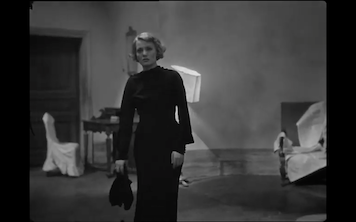
By the way, it can be said that Charles Chaplin's Shoulder Arms (1918) and Max Ophuls' Letter from Unknown Woman (1948) became the starting point of the trucking shots of Stanley Kubrick's Paths of Glory (1958) and The Shining (1980) in which a man wanders through a snow-covered hotel and a maze. His moving camera immediately reminded us of Alain Resnais' L'Année dernière à Marienbad (1960), but when Kubrick introduced the Steadicam, a device that is easier for humans to carry and less prone to camera shake than the rails of a moving car, didn't he ask himself about the distance from the subject which Resnais did not have to think about? Resnais' film unfolded in a single theater, would naturally have contained memories of Méliès's editing and the moving shots of Luis Bunuel and Orson Welles’ The Magnificent Ambersons (1942). But in Kubrick's films, the smooth images of the Steadicam lost the rigor of focal length and moving shots. The ending of The Shining, which relied on the reduction of information by adding Jack Nicholson's image of the protagonist wandering through the snowy maze to the past photographs, was rather desperate. Not only did this lack of rigor determine Kubrick's decline after this film, but it was also seen in Terrence Malick after New World (2005), which also paid homage to Renais at the end. and is linked to the tasteless boredom of his later works due to his use of "modern" techniques such as jump-cut editing and off-screen voices. What has disappeared not only from their films, but also from the current mobile shooting of American films in the age of CG, where "anything can be processed," is, as I mentioned at the beginning, the attitude of the filmmakers to resist easy robotization and to throw themselves into the rigor and danger of manual work. Rob Tregenza, who once worked as a cinematographer for Tal Béla under the influence of Jancsó, showed in Inside/Out (1997),and in Gavagai (2016), an exceptional example of tightrope-walking, shot=sequence filmmaking. With the exception of the exceptional danger of the one-scene, one-shot (which can be said to have been inherited by the billiards and donkeys in the lengthy one-cut of Bi Gan's Long Day's Journey into Night(2018)), for rigor's sake, like David Lowery's A Ghost Story (2017) or James Gray's Ad Astra (2019), must we return to classicism at a time when even Ted Fendt, the most radical of today's young American filmmakers (whose Classical Period (2018), inspired by Straub-Huillet's work, sees the light in the fact that it doesn't move), refers to Malick as the avant-garde of American cinema? Will the tracking shot ever be revived?
(First published in chuo-review n.314 2021.winter)